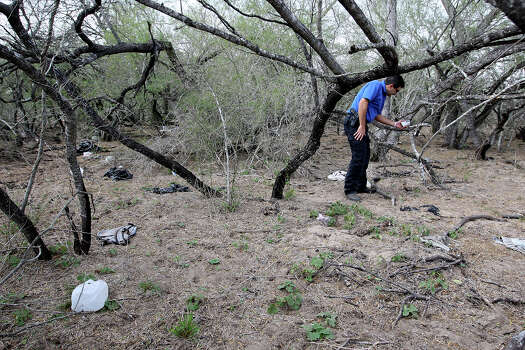
More than 120 bodies of people who died while trying to cross the border were buried in Brooks County, Texas in 2012, enough to full a Boeing 737 aircraft.
Many of their identities remain a mystery, but Dr. Kate Spradley at Texas State hopes to help change that. The work she and her students are doing is referred to as 'Operation Identification.'
"No one is treating it like a mass disaster," said Spradley, who is an associate professor of forensic anthropology at Texas State.
Working with a Baylor University professor to exhume the bodies, the remains of 80 people were then transported to Texas State's Freeman Ranch.
Because the bodies were immediately buried upon discovery by Brooks County authorities, and therefore at various stages of decomposition, they are no longer eligible for autopsy said Spradley.
"If the remains were not brought here, these individuals would have no chance at identification because they were buried immediately. It's as if their identities were wiped off the face of this earth," she said.
Spradley and her team use the skeletal remains try and identify where the person came from before they died crossing the Texas-Mexico border. She says evidence suggests many of the eighty bodies they currently have are from Central America.
Texas State anthropology students aid in the work, scrubbing bones clean of flesh and tissue before examination.
Recent Texas State graduate Hailey Duecker measured a skull Thursday afternoon. She says that sort of information can help reveal the person's origin.
"Everybody deserves to be identified," said Duecker.
The bones are a big part of this process, but sometimes, what cracks the case are the clothes. All clothing and personal items found on the bodies are kept in a freezer until they can be washed and documented. They are then uploaded to a database. The hope is that families of missing people can access the public database and recognize items belonging to loved ones.
So far, the group has had two successful identifications. In one case, they discovered an identification card on a body while processing the personal items. In another, Spradley solved the mystery herself.
The group works closely with several human rights groups. Because the families of missing persons are not U.S. citizens, they can't file missing persons reports when their family members go missing in the U.S., explained Spradley.
Human rights organizations sometimes fill that gap, said Spradley, by taking and filing missing persons reports.
Spradley was reviewing one when a description of a brown plaid shirt jogged her memory. It turned out to be the same brown plaid shirt her students had just finished washing, and the young man's remains were able to be returned to his family.
"They no longer have to continue to wonder what happened to their loved one," Spradley said.
Friday 6 February 2015
http://www.kvue.com/story/news/local/2015/02/05/team-works-to-id-migrant-remains/22953961/

0 comments:
Post a Comment